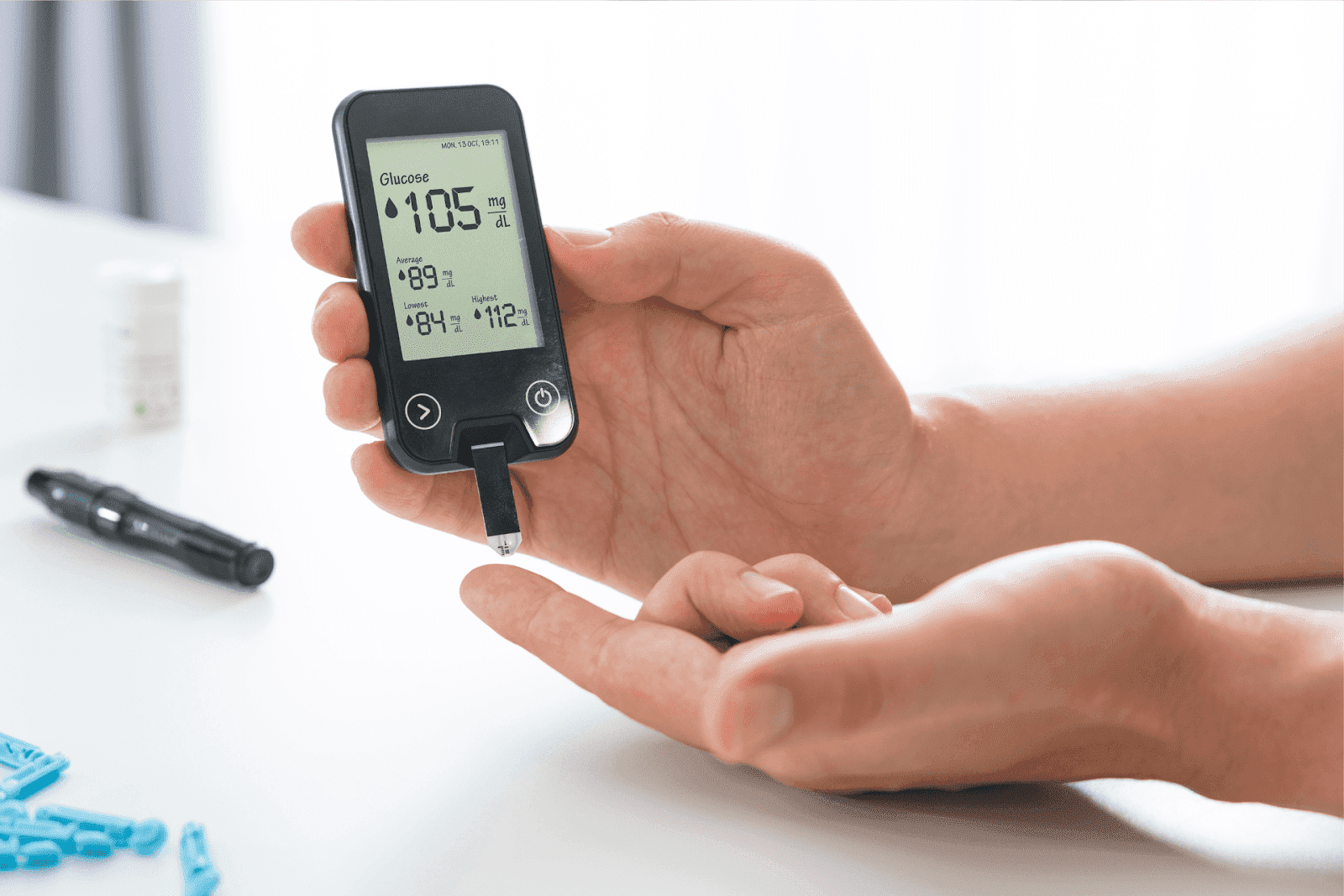Liraglutide vs Tirzepatide - Key Differences
Understanding Liraglutide and TirzepatideIn recent years, medications like liraglutide and tirzepatide have gained significant attention for their role in managing type 2 [...]
Read More
Medically reviewed by Abhijit Bhattacharyya | MD, PhD, MBA, Tufts University School of Medicine - Miami, Florida on October 29th, 2025.
In recent years, medications like liraglutide and tirzepatide have gained significant attention for their role in managing type 2 diabetes and obesity. Both drugs belong to a class known as incretin mimetics, which help regulate blood sugar levels by mimicking hormones that stimulate insulin release. However, despite some similarities, liraglutide and tirzepatide have distinct characteristics that influence their effectiveness, side effects, and patient suitability.
For patients and healthcare providers alike, understanding these differences is crucial when choosing the best treatment option. With the rise of telehealth services such as Doctronic.ai, patients can now access expert medical advice and prescriptions for these medications conveniently from home, making it easier to manage chronic conditions with professional guidance.
Liraglutide, marketed under the brand names Saxenda for weight management and Victoza for diabetes, has been a staple in diabetes treatment since its approval. It works by slowing gastric emptying, which helps to reduce appetite and promote a feeling of fullness. This dual action not only aids in blood sugar control but also supports weight loss, making it a valuable option for overweight patients with type 2 diabetes. On the other hand, tirzepatide, a newer entrant to the market, has shown promising results in clinical trials, demonstrating superior weight loss and glycemic control compared to liraglutide. Its unique mechanism of action targets both GLP-1 and GIP receptors, which may enhance its efficacy for some patients.
Moreover, the administration of these medications varies, with liraglutide typically requiring daily injections, while tirzepatide is administered weekly. This difference in dosing frequency can significantly impact patient adherence and overall satisfaction with the treatment regimen. As healthcare providers continue to explore personalized medicine approaches, understanding the nuances of these medications becomes increasingly important. Factors such as a patient's lifestyle, preferences, and specific health conditions will play a critical role in determining the most appropriate therapy, ensuring that each individual receives the best possible care tailored to their unique needs.
 Mechanism of Action
Mechanism of ActionLiraglutide works by activating the glucagon-like peptide-1 (GLP-1) receptor. This action increases insulin secretion in response to high blood sugar levels, suppresses glucagon release, and slows gastric emptying. These effects collectively help reduce blood glucose and promote a feeling of fullness, which can assist with weight loss.
Originally approved for type 2 diabetes management, liraglutide is also marketed under brand names like Saxenda for weight management. Its ability to support both glycemic control and weight reduction makes it a versatile option for many patients. Additionally, liraglutide has been shown to have cardiovascular benefits, as it may reduce the risk of major adverse cardiovascular events in patients with type 2 diabetes, making it a compelling choice for those with concurrent heart health concerns.
Furthermore, the administration of liraglutide is typically done via a once-daily injection, which can be convenient for patients. The medication's pharmacokinetics allow for a steady release of the drug into the bloodstream, contributing to its efficacy and tolerability. Patients often report a gradual improvement in their overall well-being, as they experience not only better blood glucose levels but also an enhanced quality of life due to weight loss and improved metabolic health.
Tirzepatide is a medication that combines the effects of GLP-1 receptor agonism with glucose-dependent insulinotropic polypeptide (GIP) receptor activation. This dual action enhances insulin secretion more effectively than GLP-1 alone, leading to improved blood sugar control and potentially greater weight loss benefits.
Clinical trials have shown that tirzepatide may offer superior efficacy compared to liraglutide, particularly in reducing HbA1c levels and body weight. However, as a newer drug, it may not yet be as widely available or familiar to all healthcare providers. The innovative mechanism of tirzepatide not only targets glucose metabolism but also influences appetite regulation, which can be particularly beneficial for patients struggling with obesity and metabolic syndrome.
Moreover, early studies suggest that tirzepatide may have a favorable safety profile, with a lower incidence of gastrointestinal side effects compared to other GLP-1 receptor agonists. This could lead to better adherence among patients, as tolerability is a significant factor in long-term treatment success. As more data emerges from ongoing research, tirzepatide's role in diabetes management and weight loss may continue to expand, potentially offering new hope for individuals seeking effective treatment options.
Both liraglutide and tirzepatide effectively lower HbA1c, a key marker of long-term blood sugar control. Studies indicate that tirzepatide can reduce HbA1c by up to 2.4 percentage points, which is generally greater than the reductions seen with liraglutide, typically around 1.2 to 1.8 percentage points.
This enhanced efficacy makes tirzepatide a promising option for patients struggling to achieve target glucose levels with existing therapies.
 Weight Loss Benefits
Weight Loss BenefitsWeight management is a critical component of diabetes care, and both medications contribute positively in this area. Liraglutide has been shown to promote weight loss of approximately 5 to 7 percent of body weight in clinical settings.
Tirzepatide, however, has demonstrated even more impressive results, with some patients experiencing weight loss exceeding 15 percent. This makes tirzepatide particularly attractive for individuals with obesity-related complications.
Both drugs share similar gastrointestinal side effects such as nausea, vomiting, and diarrhea. These symptoms are usually mild to moderate and tend to decrease over time as the body adjusts to the medication.
Patients should be aware of these potential side effects and discuss any concerns with their healthcare provider, especially when starting treatment.
While rare, both liraglutide and tirzepatide carry warnings about the risk of pancreatitis and thyroid tumors. Patients with a history of medullary thyroid carcinoma or multiple endocrine neoplasia syndrome type 2 are generally advised against using these medications.
Regular monitoring and open communication with healthcare professionals are essential to ensure safe use. Doctronic.ai provides accessible channels to discuss side effects and adjust treatment plans promptly.
Liraglutide is typically administered once daily via subcutaneous injection, with doses gradually increased to improve tolerance. Tirzepatide is given once weekly, which may enhance convenience and adherence for many patients.
The difference in dosing frequency can be a significant factor for patients when choosing between these therapies, especially for those who prefer less frequent injections.
Cost is an important consideration for many patients. Tirzepatide may be more expensive and less widely covered by insurance compared to liraglutide, which has been on the market longer.
However, the convenience of telehealth services like Doctronic.ai can help patients access these medications more easily and affordably by providing low-cost telehealth visits and direct-to-patient care options.
Deciding between liraglutide and tirzepatide depends on various factors, including individual health status, treatment goals, tolerance for side effects, and cost considerations. Both medications offer powerful tools for managing diabetes and obesity, but their differences in mechanism, efficacy, and administration may make one more suitable than the other for specific patients.
Consulting with a healthcare professional is essential to tailor treatment to personal needs. With platforms like Doctronic.ai, patients can receive expert guidance and prescriptions without leaving home, making it easier to start or adjust therapy safely and conveniently.
The development of medications like liraglutide and tirzepatide highlights the rapid progress in diabetes care, combining innovative science with patient-centered approaches. As research continues, newer therapies may offer even greater benefits with fewer side effects.
Meanwhile, leveraging technology through telehealth services ensures that patients have timely access to these advances. Doctronic.ai exemplifies this modern approach by providing AI-powered, personalized medical care that supports patients every step of the way.
For anyone considering treatment options for diabetes or obesity, understanding the nuances between liraglutide and tirzepatide is a valuable step toward better health outcomes.
As you navigate the complexities of diabetes and weight management, why not choose a healthcare partner that's as advanced as the treatment options you're considering? Doctronic is not just any AI doctor; it's the #1 AI Doctor, offering free AI-powered medical consultations and affordable telehealth services across all 50 states. With over 10 million satisfied users, our platform provides fast, smart, and personalized medical advice at your fingertips. Whether you're considering liraglutide, tirzepatide, or any other treatment, Doctronic is here to support your journey to better health. Skip the line. Talk to an AI Doctor Now, for free.
Understanding Liraglutide and TirzepatideIn recent years, medications like liraglutide and tirzepatide have gained significant attention for their role in managing type 2 [...]
Read More